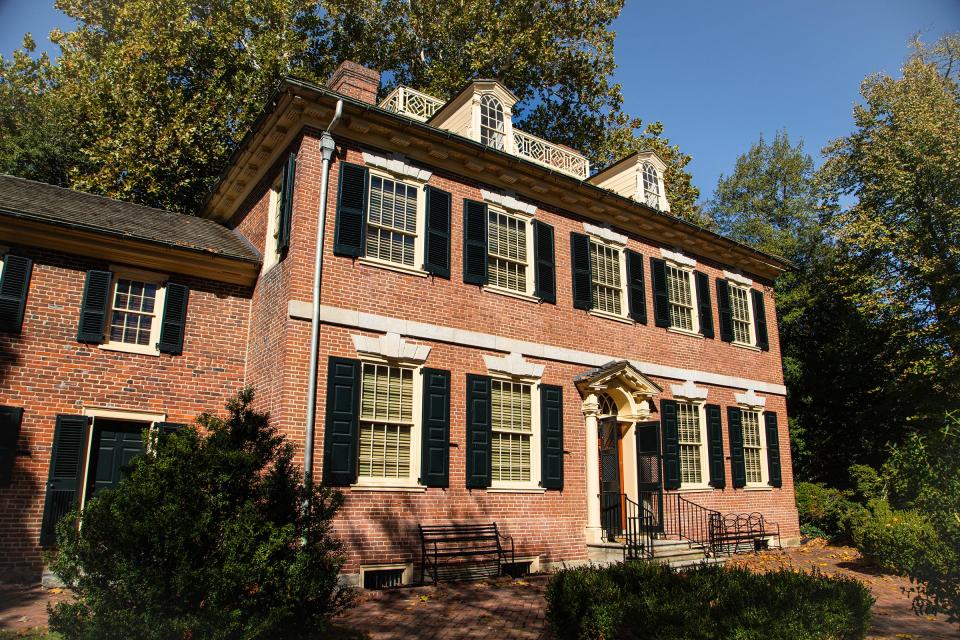A new book sheds light on historic Odessa, Colonial America
Objects are more than physical things; they hold memories, and social and cultural narratives that help us understand and connect with the past, appreciate the present, and wonder about the future. They are tacit witnesses to history that give us insights into the lives, aspirations, ingenuity, innovations, and experiences of the people who came before us, and the societal norms of their time.
In 2014, we at The Historic Odessa Foundation set out to create a thorough public catalog of the more than 7,000 objects and furnishings, as well as our 18th- and 19th-century museum houses and buildings in our collections. We tackled the project with the passionate intent of establishing the collections’ own independent identity, and to fully understand its scope. From out of the catalog, the idea for a book publication was born.
For almost 50 years, until 2005, when we took ownership of Historic Odessa and established the nonprofit Foundation, The Historic Houses of Odessa, as it was then known, and its collections were the property of Winterthur.
The nationally recognized decorative arts museum had been given them, starting in 1958 with Odessa’s Corbit mansion today’s Corbit-Sharp House (c. 1774), a National Historic Landmark and National Park Service Network to Freedom site — by prominent Delaware preservationist H. Rodney Sharp (1880-1968). In 1938, Mr. Sharp began a full-scale restoration of old Odessa with the purchase of the Corbit mansion — a legacy that we honor, preserve and promote to this day.
Objects tell stories in a myriad of ways through their historical context, physical attributes, symbolism, evolution, setting, documentation or provenance.

Historic Odessa’s collections and buildings are what set us apart from many other historic sites. Unusually strong provenance, so well documented through a plethora of wills, household inventories, letters, drawings and business ledgers, coupled with documented connections to local and regional early craftsmen – like furniture maker John Janvier Sr. (1749-1801) and sons, who lived in town — all combined to create an exceptional basis for interpretation of 18th- and early 19th-century life in Delaware, and the colonies.
Historic Odessa had something to offer that was not readily found in other places.
With the full encouragement of the board of directors, led by the founding member of the board, and legacy preservationist Donnan Sharp, H. Rodney Sharp’s granddaughter, the Foundation staff pursued funding opportunities to support a publication and the online collections catalog.
More Open Call: Delaware Children's Museum hosts End of Summer Bash
To survey the collection and write this publication, Philip Zimmerman, Ph.D., a national authority on early American furniture, was the natural choice, based on his scholarship in American decorative arts and comprehensive knowledge of Delaware and regional craftsmen.
After several years of preliminary research, and with an enormous debt of gratitude to Ellice and Rosa McDonald and the Marmot Foundation for funding the projects in 2018, "A Storied Past: Collections of Historic Odessa'' finally became a reality. In June, we were thrilled and proud to announce its publication by Rowman & Littlefield, and its availability to the public.
"A Storied Past '' illuminates a multilayered and interconnected array of decorative and fine arts from our collections, and captures the historical character and significance of Historic Odessa’s Corbit-Sharp House and the Wilson-Warner House (c. 1769), which in 1923 became Delaware’s first house museum. The book also provides an intimate glimpse into the daily life of members of the generations of Corbit and Wilson families who lived in these homes. It also sheds light on the history of Odessa in Delaware, and colonial America.
Each of our houses retains a high percentage of original furnishings and locally made objects. Some, labeled by their owners for posterity, document evolving trends in early collecting and historic preservation.
We know what would have happened to this collection if the Corbits hadn’t had an early interest in preserving their family legacy, which continues today, and if Mr. Sharp hadn’t stepped in in 1938 … these stories would have been scattered to the wind.
More Open Call: Vision for Read House landscape connects past and future: Open Call
Over the past four years, Mr. Zimmerman, using abundant archival and genealogical sources, carefully examined, documented, and interpreted 100 of these objects to spotlight in the book along with four interpretive chapters, and 200 photographs. Relatively few historic sites have received this level of investigative treatment.
We are so deeply grateful to everyone involved who brought the lives of the families and people of Odessa and the region out from their well-cared-for objects to tell their stories, reveal their secrets, and help us to have a richer understanding of our human experience.
We welcome everyone with a curiosity about the past to come explore these stories at Historic Odessa through our historical and educational resources, and regular cultural offerings.
Debbie Buckson is executive director of Historic Odessa Foundation.
This article originally appeared on Delaware News Journal: 'Storied Past' from historic Odessa sheds light on Colonial past

